Navigating the Challenges of Growing Parsley
Go4Turf
February 13, 2024
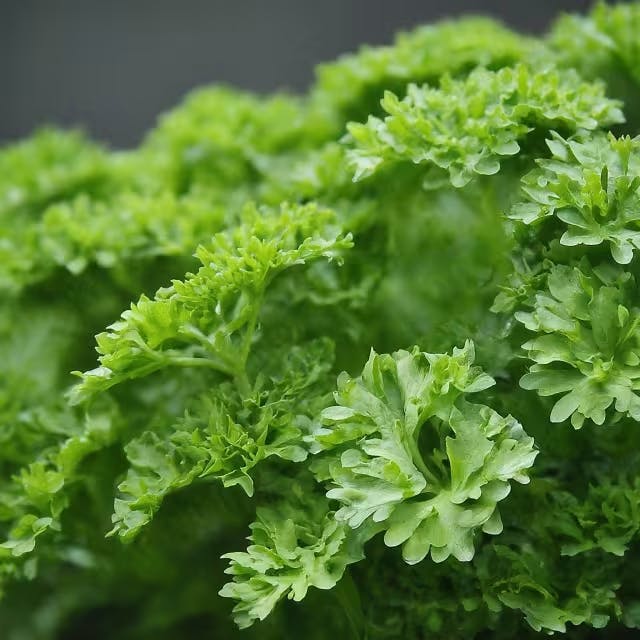
Embarking on the journey of growing parsley in your garden presents a unique set of challenges that can both intrigue and stump even the most experienced gardeners. This versatile biennial plant, which requires two years to complete its life cycle, demands careful attention to soil quality, watering techniques, and pest control for a bountiful harvest. Whether you're a seasoned green thumb or a budding gardener, navigating the challenges of growing parsley effectively requires an understanding of its lifecycle, alongside the right cultivation practices to ensure your parsley thrives from planting to plate.
Key Takeaways
Understanding the biennial lifecycle of parsley is crucial for successful growth, as it affects planting times and care strategies.
Soil quality significantly impacts parsley growth; well-draining, nutrient-rich soil is essential for healthy plants.
Proper watering techniques are key to parsley cultivation, with a balance required to avoid both underwatering and overwatering.
Keeping common pests and diseases at bay through vigilant care and natural remedies can protect parsley plants and ensure a healthy harvest.
Timely harvesting and correct storage methods are essential for maintaining the freshness and flavor of parsley from garden to table.
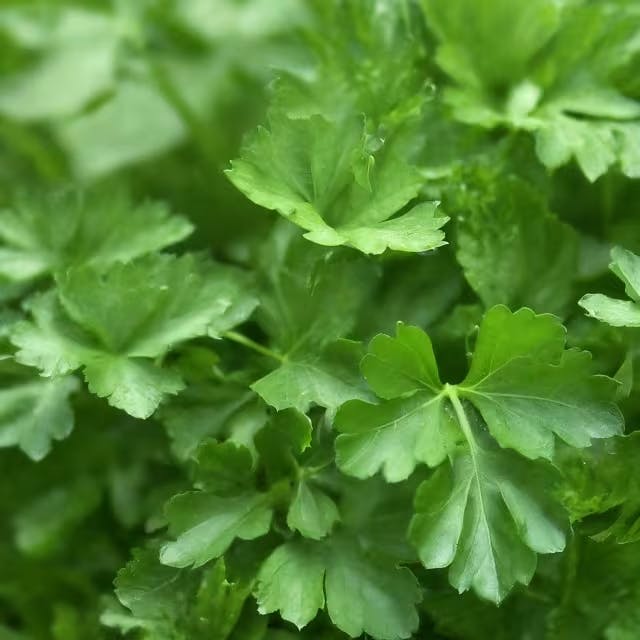
Understanding the Lifecycle of Parsley for Better Growth
Parsley, often classified as a biennial, undergoes a unique lifecycle pivotal for gardeners to understand. In its first year, parsley focuses on leaf production, essential for culinary use. As it transitions into the second year, it prioritizes flowering and seeding, indicating the end of its lifecycle. Recognizing these phases aids in maximizing parsley harvest and ensures continual growth. Seasonal care tips, vital for parsley's development, highlight the importance of this cycle. For instance, during its leaf production phase, ensuring optimal sunlight and water is crucial, as mentioned in Transform Your Black Thumb into a Green Thumb: Essential Tips. Similarly, preparing for the colder months, as detailed in Preparing Your Garden for Fall: Tips and Tricks, becomes paramount as parsley seeds or prepares to do so. Understanding these stages links directly to effective garden planning and can significantly impact parsley yield. For more detailed information on plant life cycles, including parsley, visit this source.
The Importance of Soil Quality in Parsley Cultivation
Soil quality plays a pivotal role in successfully cultivating parsley, demanding keen attention to detail and proper preparation. Optimal soil conditions for parsley include well-draining soil with a pH between 6.0 and 7.0. Here's why soil health is crucial:
Nutrient Availability: Parsley thrives in nutrient-rich soil, requiring a balanced mix of nitrogen, phosphorus, and potassium for robust growth. Organic compost or a slow-release fertilizer can enhance soil fertility.
Water Management: Efficient water management is vital. Parsley needs soil that retains moisture without becoming waterlogged. Adding organic matter can improve soil structure and drainage.
Pathogen Risk Reduction: A recent study demonstrates the risk pathogens pose to vegetables like parsley through contaminated compost or irrigation water. These pathogens can persist in soil and on the vegetables themselves for extended periods Read more on the study. Ensuring clean, pathogen-free compost and water is essential for healthy parsley and consumer safety.
For gardeners interested in further enhancing their gardening skills and ensuring plant health, it's worthwhile exploring essential gardening tips here.
When preparing your garden for parsley, testing soil pH and amending as necessary can set the stage for success. It's also advantageous to incorporate these practices as part of preparing your garden for fall, ensuring a vibrant and healthy landscape. Find insightful tips and tricks for garden preparation here.
By prioritizing soil quality and adhering to these guidelines, gardeners can navigate the challenges of growing parsley, resulting in lush, flavorful herbs that enrich culinary dishes.
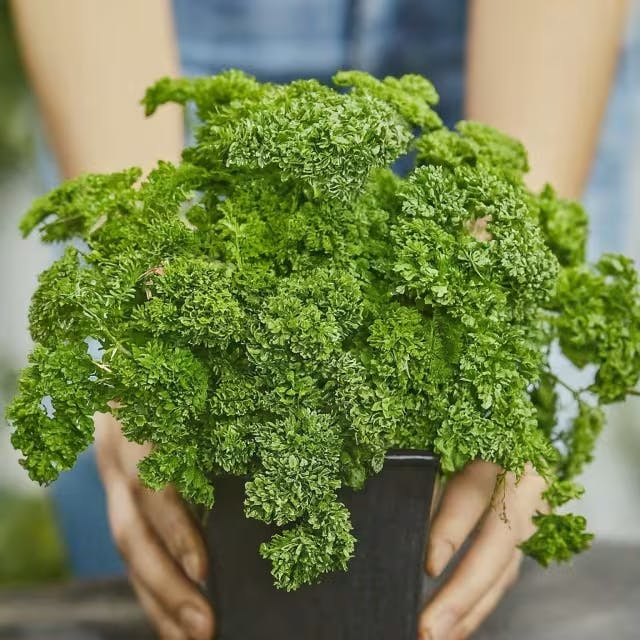
Watering Techniques for Parsley: How Much Is Just Right?
Parsley, a popular herb with a multitude of culinary and health benefits, requires careful attention to watering practices for optimal growth. This necessity becomes pronounced considering parsley's biennial nature and preference for moist, well-drained soil. Too much or too little water can hinder the plant's growth and affect its flavor. To learn more about parsley's health benefits, including its high levels of Vitamin C and folates, see Margaret Roach's insights on parsley cultivation.
Optimal Watering Practices
Seedling Stage: Keep the soil consistently moist to assist with germination, which may be slow. Seedlings should never dry out.
Mature Plants: Once established, parsley prefers 1-2 inches of water per week, depending on the weather and soil type. Use a rain gauge to monitor natural rainfall and adjust your watering accordingly.
A balanced approach to watering nurtures resilience in parsley, allowing it to thrive even in part shade conditions as Margaret Roach notes. Gardening success hinges on adapting to the plant's needs, a principle that applies broadly across all gardening efforts. For those seeking to expand their gardening expertise, consider incorporating tips from the comprehensive guide on transforming your gardening skills.
Seasonal Adjustments
Climate impacts parsley's water needs; more is required during hot, dry spells and less during cool, wet periods. Adjust your watering schedule based on current weather conditions and always water early in the day to minimize evaporation and prevent diseases.
By mastering these watering techniques, gardeners can ensure their parsley not only survives but thrives, providing a fresh supply of this versatile herb.
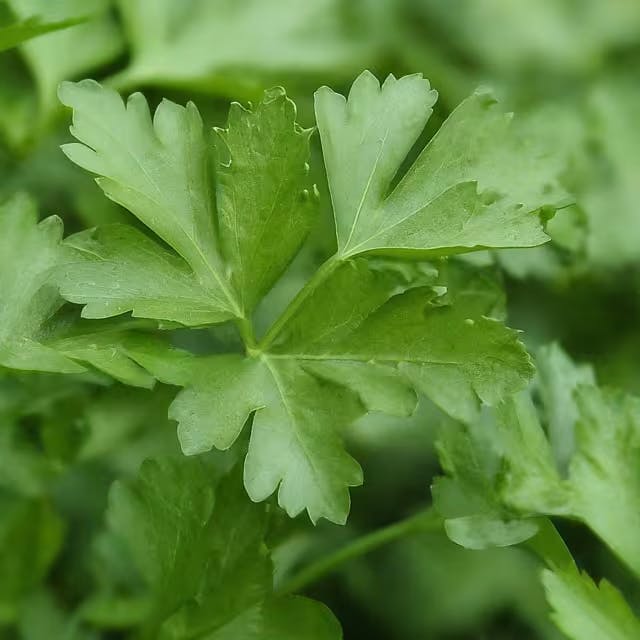
Combatting Common Pests and Diseases in Parsley Plants
Keeping parsley healthy and thriving involves vigilant pest and disease management. One common adversary is the spider mite, particularly the two-spotted variety, which thrives in hot, dry conditions. These pests target the lower leaves first, causing discoloration and potentially significant damage if left unchecked. Effective control includes early detection and promoting a diverse garden ecosystem to encourage natural predators. For detailed guidance on managing spider mites, consider this insightful source. Additionally, incorporating general gardening practices to enhance plant health can be beneficial. This includes mastering sunlight, water, and nutrient management, as outlined in essential gardening tips, further safeguarding your parsley from pests and diseases.
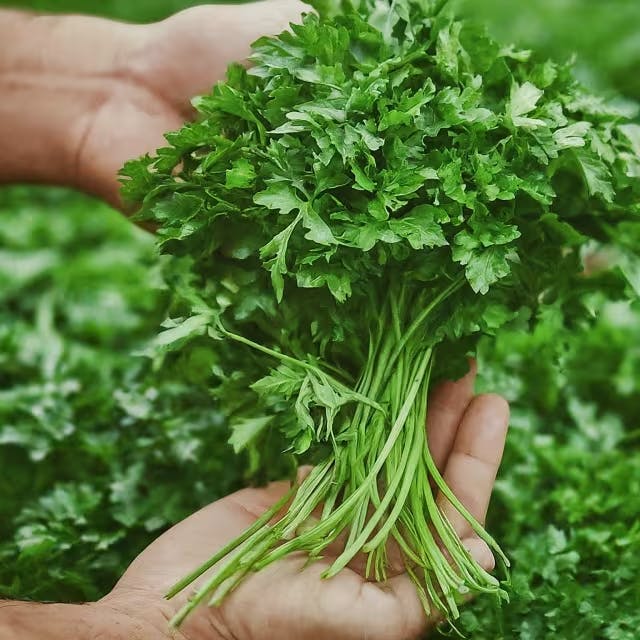
Harvesting and Storing Parsley for Maximum Freshness
When ready to harvest parsley, select the outermost leaves first, allowing the inner leaves to continue growing. This method ensures a continual harvest throughout the growing season. For optimal freshness, harvest in the morning when moisture levels are highest. After harvesting, rinse the leaves gently under cool water to remove any soil or debris, then pat dry with paper towels.
To store parsley, wrap the stems in a damp paper towel and place them in a plastic bag in the refrigerator. This method keeps parsley fresh for up to a week. For longer storage, parsley can be frozen or dried. To freeze, chop the parsley and place it in ice cube trays with water, then transfer the frozen cubes to a freezer bag. Dried parsley should be stored in an airtight container in a cool, dark place.
Consistent watering and avoiding common gardening issues are crucial for healthy parsley plants. Check out further insights on how to ensure plant health, including parsley, by mastering sunlight, water, nutrients, and more through our comprehensive guide on transforming your black thumb into a green thumb. Successfully navigating the challenges of growing parsley hinges on understanding its specific needs, from its lifecycle and soil requirements to optimal watering practices and pest control. By adapting these insights to your gardening approach, you'll enhance your ability to cultivate thriving parsley plants that yield fresh, flavorful leaves. This comprehensive guide equips you with the necessary knowledge and techniques to enjoy a bountiful harvest, ensuring your parsley garden flourishes season after season.
Frequently Asked Questions
What are the key stages in the lifecycle of parsley and how do they affect harvest?
The key stages in the lifecycle of parsley crucial for harvest include the leaf production phase in the first year and the flowering and seeding phase in the second year. During the initial phase, focusing on soil health, optimal watering, and pest management are essential for robust leaf growth, ideal for culinary use. As parsley transitions to its second year, harvesting should be maximized before the flowering phase signals the imminent end of its lifecycle. Understanding these stages is vital for continual harvests and the overall health of the parsley plant.
How does soil quality influence the success of growing parsley?
Soil quality significantly impacts the success of growing parsley by influencing nutrient availability, water management, and pathogen risk reduction. Optimal soil conditions for parsley are well-draining with a pH between 6.0 and 7.0, enriched with organic compost for fertility, and capable of retaining moisture without becoming waterlogged. Moreover, using clean, pathogen-free compost and water can safeguard parsley's health and yield. Proper soil preparation and maintenance are crucial for cultivating healthy parsley that enriches culinary dishes.
What are optimal watering practices for parsley at different growth stages?
For optimal growth at different stages, parsley requires varying water amounts:
Seedling Stage: Maintain consistent soil moisture to facilitate slow germination. Seedlings should not dry out.
Mature Plants: Need 1-2 inches of water weekly, adjusted for weather and soil conditions. Use a rain gauge to guide watering.
Adjust watering based on the season; increase during hot, dry spells and decrease when cool or wet. Water early in the day to minimize evaporation and disease risk.
How can gardeners effectively manage pests like spider mites in parsley cultivation?
Effectively managing spider mites in parsley involves promoting a diverse ecosystem to encourage natural predators, ensuring early detection of infestation on lower leaves, and adhering to general gardening practices that bolster plant health, such as optimal sunlight, water, and nutrient management. For more details, see the advice on managing spider mites and enhancing overall plant resilience through proper gardening techniques here.
What are the best methods for harvesting and storing parsley to maintain freshness?
To maintain freshness after harvesting parsley, harvest in the morning, choosing the outermost leaves first. Store by wrapping the stems in a damp paper towel, placing them in a plastic bag in the refrigerator, which keeps parsley fresh for up to a week. For longer storage, you can freeze chopped parsley in ice cube trays with water or dry it and store in an airtight container in a cool, dark place.
How can adjusting gardening practices based on seasonal changes benefit parsley growth?
Adjusting gardening practices based on seasonal changes enhances parsley growth by tailoring care to its lifecycle stages. In the first year, focusing on leaf production requires optimal sunlight and water. The preparation for colder months is crucial as the plant transitions into seeding in its second year. Seasonal adjustments in watering, based on climate changes, ensure the plant's needs are adequately met, promoting a healthy growth cycle essential for maximizing parsley harvest.